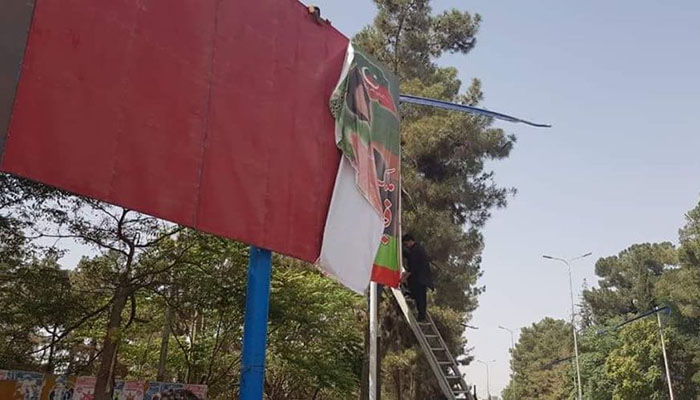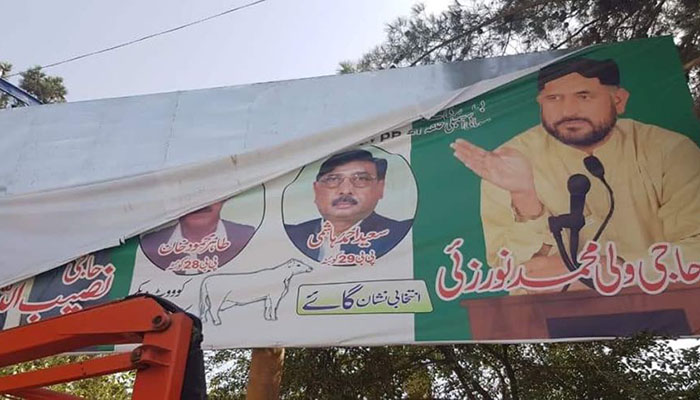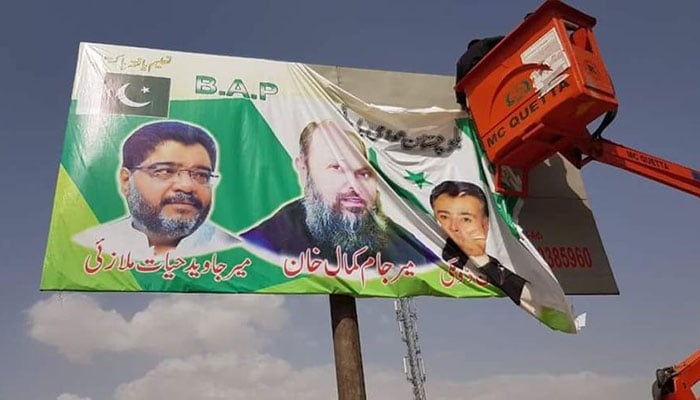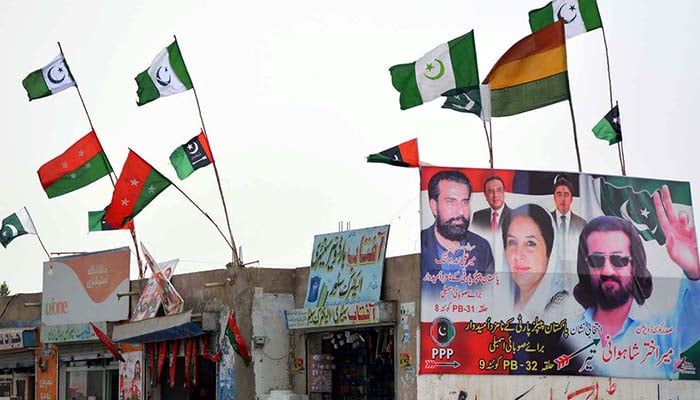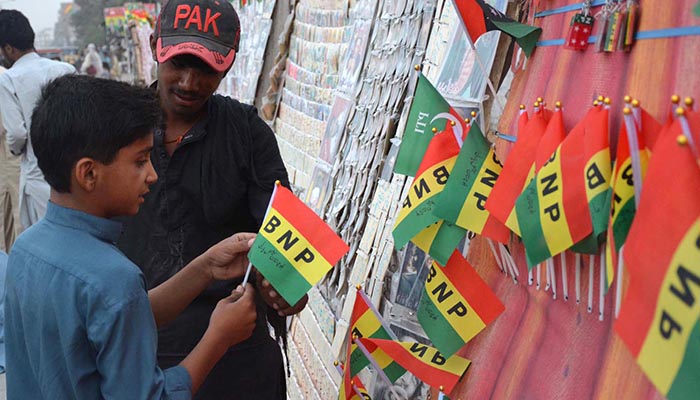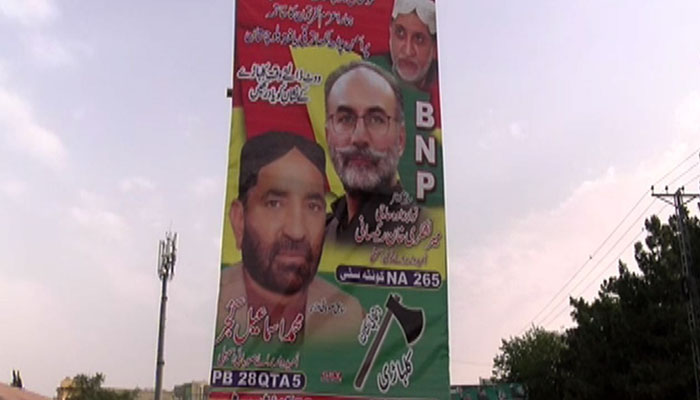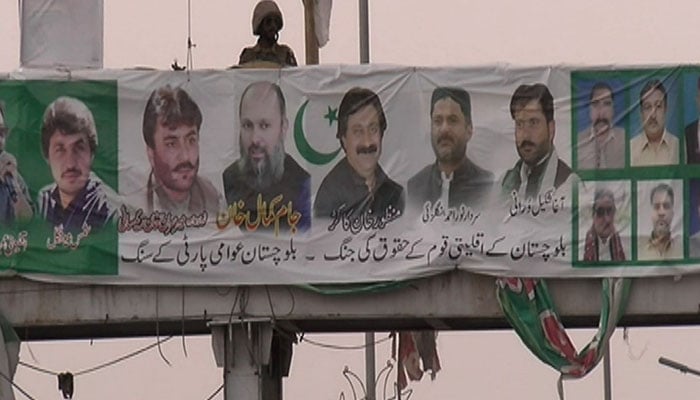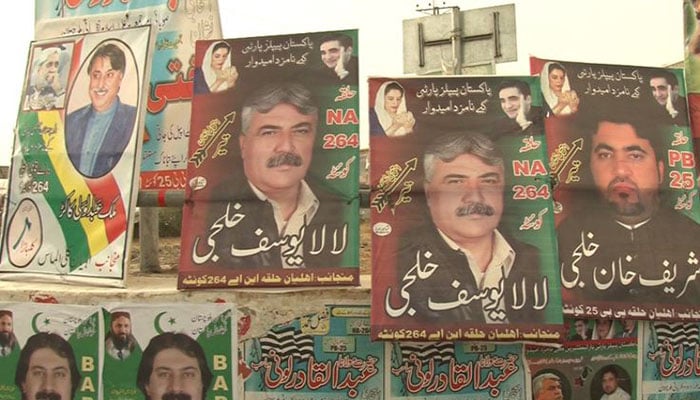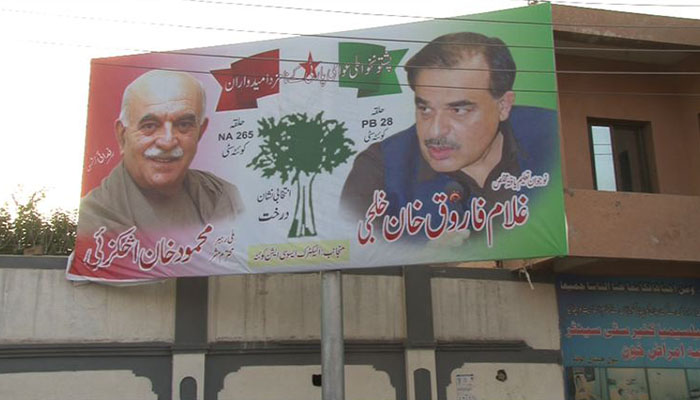There are two weeks to go before Pakistan votes to elect members of its 15th Parliament. And yet, election fever in Balochistan has been a damp squib, particularly in its capital city, Quetta.
There are a total of 4,299,494 voters in the province. But none seem too excited to cast a ballot. Although campaign banners and posters have blanketed Quetta’s roads and buildings, they haven’t evoked much enthusiasm, even among party workers.
One reason, say those involved in hustings, are the Election Commission of Pakistan (ECP)’s restrictive rules. Campaign posters can be no larger than 3 feet x 9 feet, according to its code of conduct. Those violating orders have been forced to take down their hoardings. The district monitoring team, headed by Quetta’s deputy commissioner, has, in the last one month, removed over a hundred banners, posters and pamphlets.
Separately, candidates have also arranged fewer corner meetings this year, compared to 2013. Even the ones that have been arranged have had a lower than expected turnout. “That is because the candidates are not talking about our real issues,” explains a political worker, who asked to remain anonymous. “Issues like water, health, education, basic facilities. Those contesting are still talking about tribal and lingual issues in the province. Majority of the people disapprove of such slogans.”
But even up the ladder, senior party leaders of major political parties — PML-N, PTI and PPP — aren’t that interested in corralling support in the province either. One sign of this is that Shehbaz Sharif, the PML-N president, is contesting from four National Assembly constituencies, Imran Khan of the PTI from five and Bilawal Bhutto Zardari of the PPP from three. Combined, these seats have been handpicked from each province, except Balochistan. One wonders why these national leaders would choose to ignore the province?
Neither have any of these prominent leaders held a political rally in Balochistan, to date, this year. The PTI, though, has announced to hold a public meeting in Quetta on July 17, where Imran Khan will address the masses. Its local leadership is confident of securing the maximum number of parliamentary seats from Balochistan. “We will form our government in the centre and in Balochistan,” insists Qasim Soori, PTI’s candidate for NA-265 (Quetta).
But they could face a tough challenge from the Balochistan Awami Party (BAP), founded in March this year by over 20 dissidents from the Pakistan Muslim League-Nawaz and the Pakistan Muslim League-Q.
Over 288 candidates are in the running for 16 National Assembly seats, while 951 are vying for the 51 provincial assembly constituencies. Meanwhile, an estimated 599 are contesting independently.
Political wonks predict a good showing by the newly-formed BAP, since its ranks include former ministers from two large political parties. These tribal leaders and politicians won in 2013, they are likely to win again in 2018.
It is also important to recall the role BAP leaders played earlier this year. Its members, previously PML-N lawmakers, lobbied against their own chief minister, Sanaullah Zehri, and sided with the opposition to have him removed.
On Jan 9, Zehri was forced to resign and a new chief minister was appointed for the remaining term. Since the dismissal of the PML-N coalition government, there is a political vacuum in the province, which is likely to be filled by BAP. But politics in Balochistan is a lot trickier than that in the rest of the country. In the last three decades, no single political party has ever swept through the province. The provincial assembly is often a patchwork or coalition of parties, which is what is expected this time as well.



